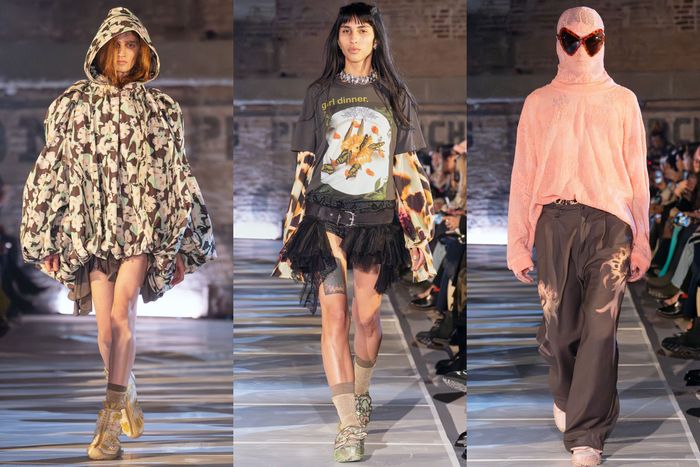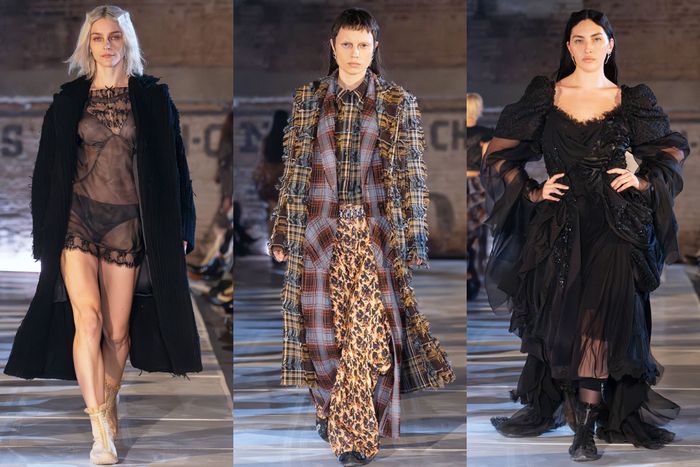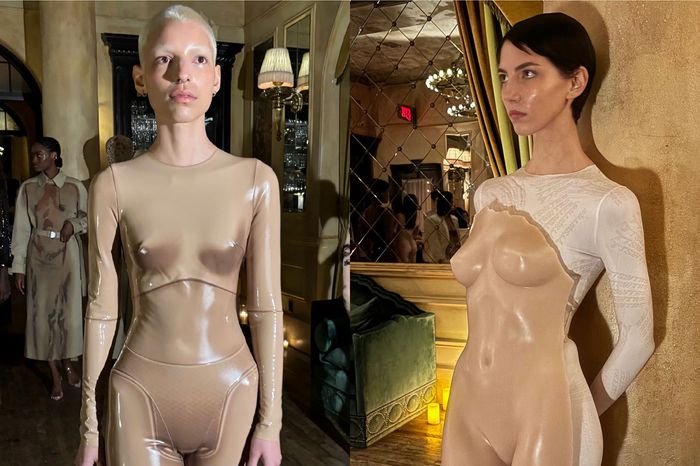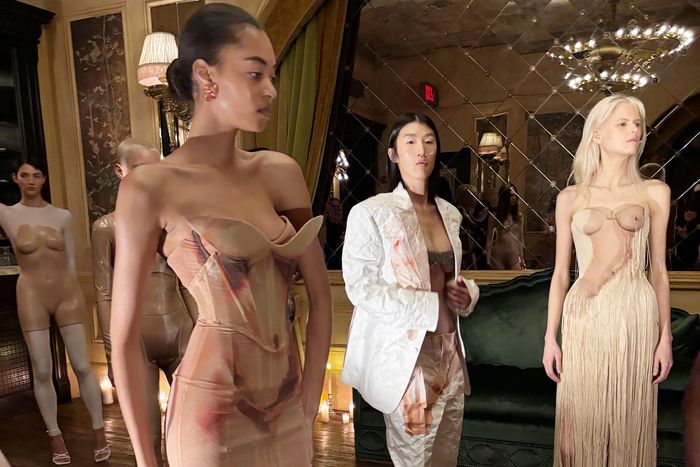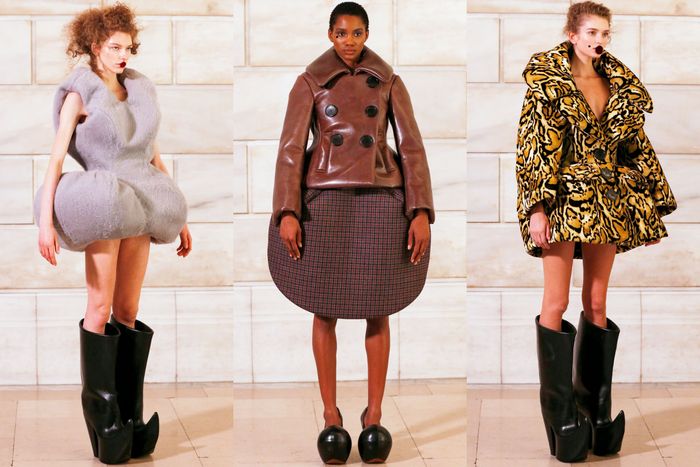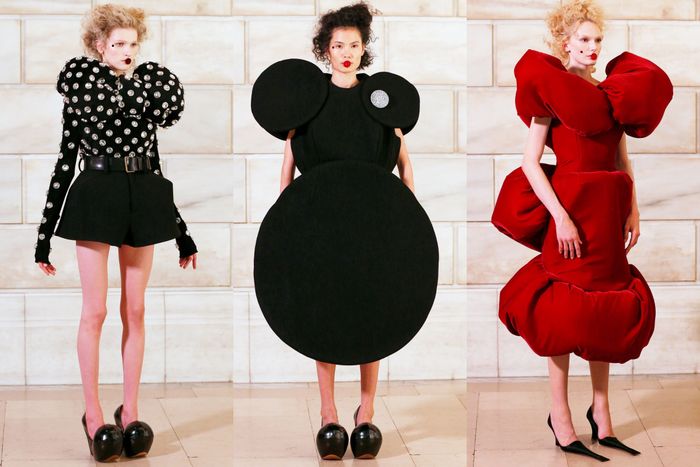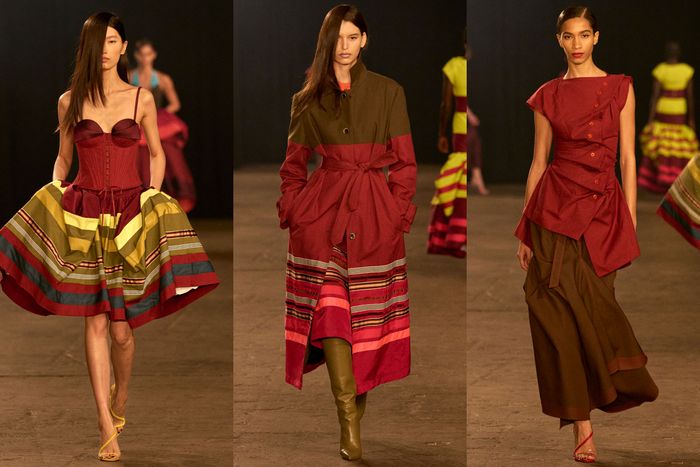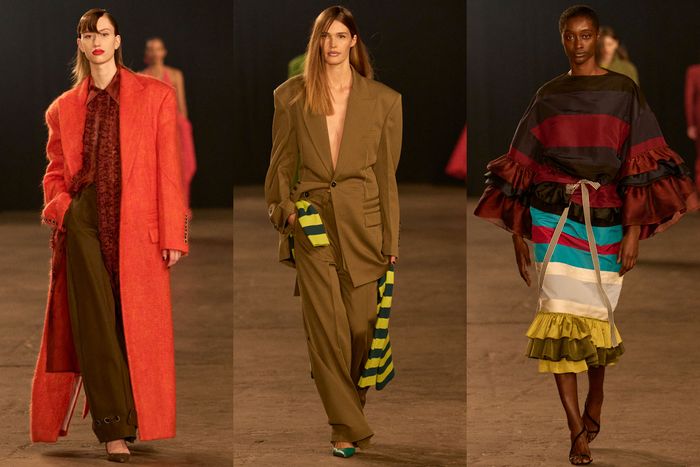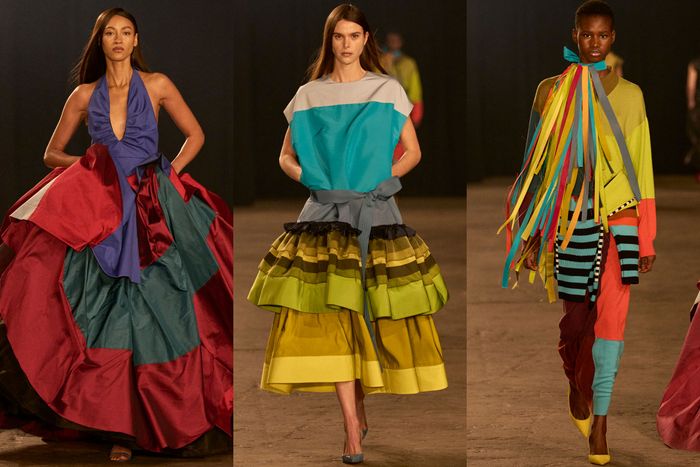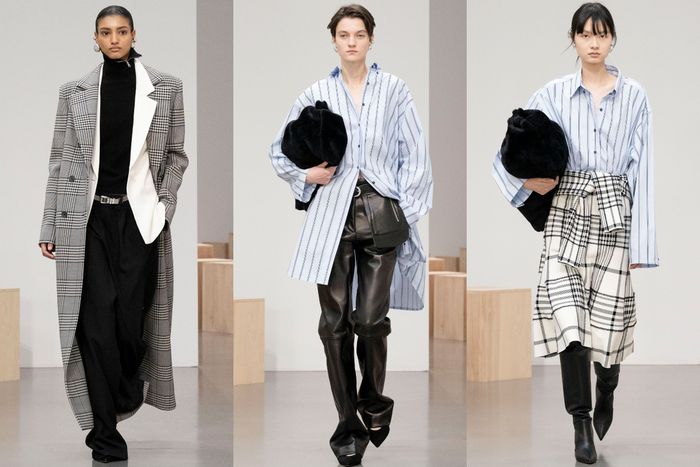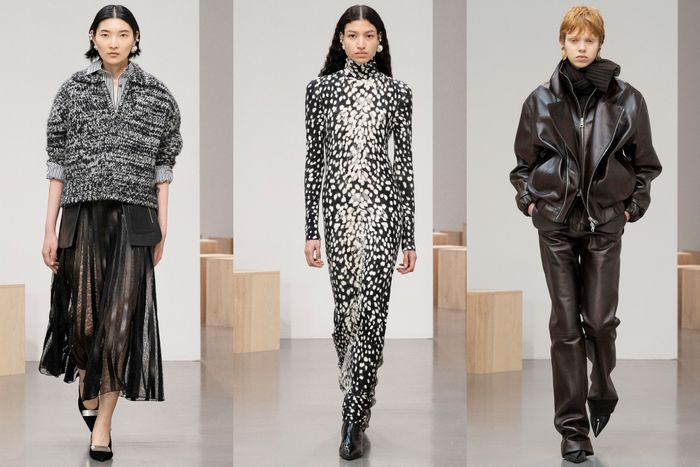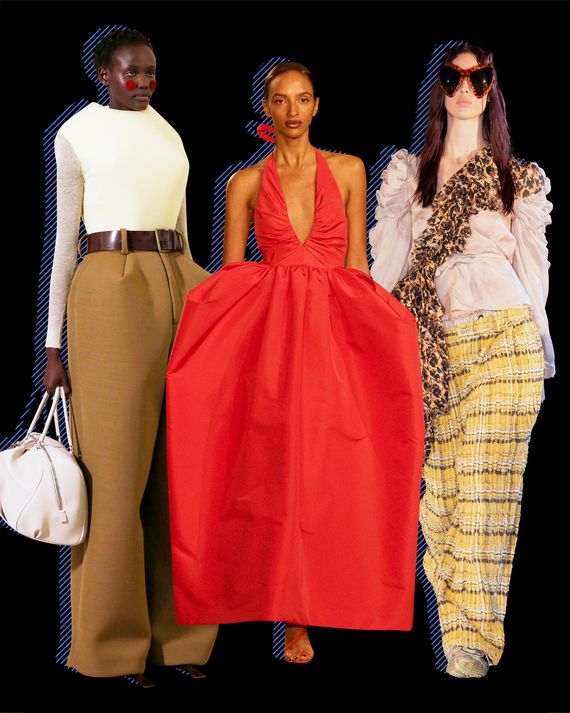
A couple of years ago, Jack McCollough and Lazaro Hernandez, the founders of Proenza Schouler, presented a show that was strong on pantsuits and classic coats. That show changed how people saw Proenza, which tended to be a grab bag of styles, and how I wanted to dress. That’s when you know fashion is working: when it sets off an emotional charge or when it picks up a vibration that’s in the air and it becomes something bigger. We saw great examples of tailoring everywhere.
That was then, however. The industry’s struggles with rising costs, slow-paying stores, and now potential tariffs have deepened. McCollough and Hernandez recently resigned from their company to be free to take a creative directorship elsewhere, possibly in Europe. “It’s a really intense moment,” said Hillary Taymour, whose modest Collina Strada show on Thursday — titled “Fempire” — made use of deadstock fabrics and garments upcycled from thrift stores. “I’m just trying to create the volume with things that exist,” she added. Politically and ethically, that thinking makes sense to a lot of people.
But is it enough?
On Wednesday night, as the fall 2025 runway season got under way, I met a woman named Anna Osmekhina who traveled from Kyiv to present her collection of 13 looks at the Chelsea Hotel. A former costume designer, Osmekhina founded her label, TTSWTRS, in 2013. She got some immediate attention from Colette, the Paris store that is now closed, and she managed to kick-start a business that today employs, she said, 142 people in Portugal, Poland, and Ukraine, some of them graphic designers and artists whose work is evident in the designs. She sells to about a dozen stores.
I don’t know how Osmekhina does it, but her ideas are compelling and the workmanship is superb. Many of her “outfits” were bodysuits that had been printed (the method recalled Jean Paul Gaultier’s early work with tattoo motifs). Other pieces included corsetry and molded anatomical forms. And some materials were hard to identify. Was it latex that gave a blonde model’s outfit a liquidlike sheen? An oversize pantsuit was made of printed Tyvek, the building-wrap material. Again, using Tyvek isn’t new in fashion, but Osmekhina and her collaborators did it well.
What was most striking about the models as they wandered around a room at the Chelsea while waiters passed drinks and small cakes was that Osmekhina was trying to imagine dressing in a post-clothing world.
There was a feeling of AI in the alien slickness of some garments and in the styling of the models. Indeed, they reminded me a bit of Daniel Roseberry’s recent couture collection for Schiaparelli, which was partly about the human pursuit of perfection. But Osmekhina, in her small but telling way, was taking things a step further with her naked-looking bodysuits and molded experimental forms.
“I want to lose all the clothing,” she said. “It’s too much clothing for the planet. We need to stop.”
That’s hardly what multibillion-dollar fashion brands want to hear, but at least young and daring independent designers are in a position to show us something new and possible. They’ve got nothing to lose. Ellen Hodakova Larsson, the Swedish designer who won last year’s LVMH Prize and does amazing work with existing materials, is another member of that group. She’s changing how we see clothes.
With all kinds of events unfolding rapidly across the world, it is almost impossible for people to process what’s happening, and it’s plainly hard for designers to know how to respond. That uncertainty and confusion is likely to be reflected on the runways over the next year or two. And, as everyone knows, the industry is going through turbulence of its own because of its so-called “musical chairs.” The latest designer to lose his place is Sabato de Sarno of Gucci. Today, in New York, two labels, Calvin Klein and the relatively recent start-up Fforme, have shows by new creative directors.
Meanwhile, Marc Jacobs, perhaps the most creative designer in New York and one of the best in the world, is showing off-schedule and selling his small collection only at Bergdorf Goodman and, beginning this year, at the Isetan department store in Japan. I missed his show on Monday but saw the clothes in his showroom the other day.
They are remarkable in terms of craft and the almost surreal shapes he imposes on the body, mostly achieved by foam padding (in sweaters, say) and dense inner layers. I found myself smiling at how he conveyed flatness in one suiting look and a cartoonish roundness in another. This season, the toes of his pumps made me think of animal snouts or toes that got too close to a flame and melted. Again, they played with our imagination.
The paradox of his recent collections is that although he evokes the weird, manipulated beauty of digital technology, his techniques are thoroughly grounded in traditional couture. You get that sense of roundness in a couture garment because it’s cut and sewn by hand. I hope that the costume department of the Met (and those of other museums) picks up designs from these collections, because they’re extraordinary. They mark a moment in time and in a designer’s career.
But I also wish Jacobs could be less separate, less specialized, and more “in the world” with his fashion, as he was only a few years ago. I realize the kind of show he did in February 2020 — the brilliant collaboration with Karole Armitage in which the clothes were at once wearable and so alive — may not be possible if his brand’s owner, LVMH, doesn’t support a high-end collection business. Still, fashion needs his big voice more than ever. And, lately, it feels like an interesting oddity verging on an artifact. All that talent deserves to lose the stuffing and be freed up.
Christopher John Rogers returned to the runway, and the main show schedule, after a short absence, and I went out to the Brooklyn Navy Yard last night full of expectation, but instead was disappointed.
Rogers has the talent to read the current scene and adjust his style, as he’s done in the past, but this time he didn’t. Oversize pantsuits and big shirts worn with wide-cut pants looked relaxed enough, but generally, his designs — with fancy poufs of fabric at the hips, tiers of ruffles, ribbon trim on colorfully striped coats and dresses — looked fussy. It’s not how people dress today, except maybe on red carpets and at events. Rogers has plenty of signatures but, like every designer, has to consider how to make his designs feel contemporary. And one essential ingredient is a sense of practicality. How does a woman get from A to B in her daily life? Do the clothes liberate her, or do they impede her? Rogers isn’t addressing those basic realities. Prettiness and flair, yes.
Brandon Maxwell had an easier time with the contemporary. His collection wasn’t a breakthrough, and it depended a lot on styling (the work of Robbie Spencer), but the strong mix of sportswear separates, like leather jackets and big shirts with slouchy pants or check skirts, looked timely and friendly.



